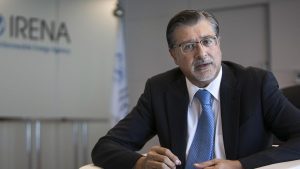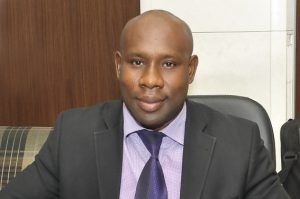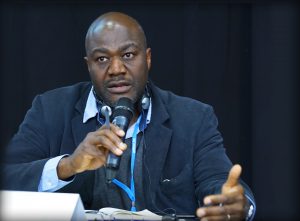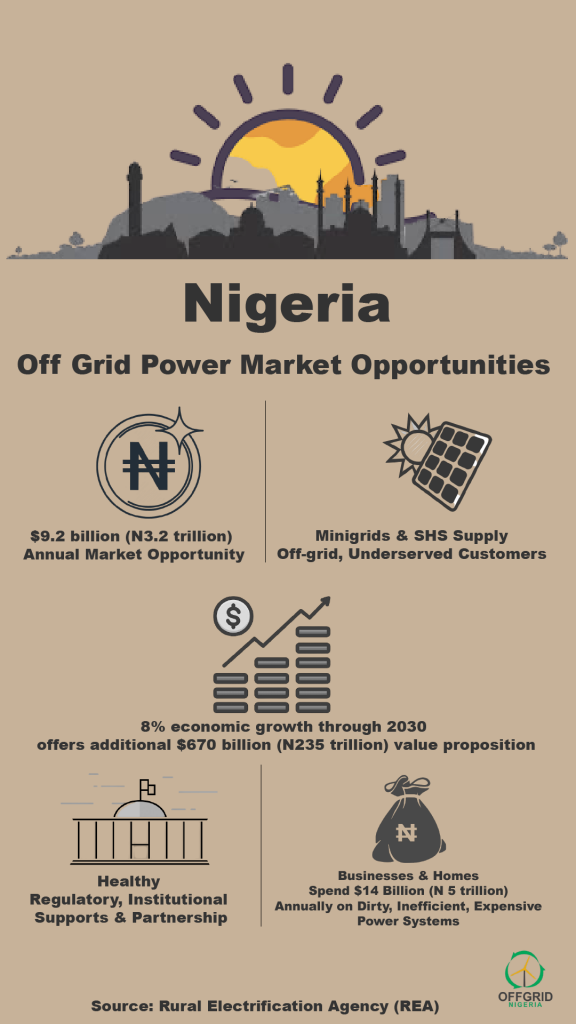Ayodeji O’Deji, is the CEO of Protergia Nigeria Ltd, an indigenous renewable energy firm with expertise in providing solar, biomass, wind, and small hydro power solutions. On the back of a recent mini grid power conference Nigeria hosted in Abuja to scale up investments in mini grid power projects, Deji, took questions from select media houses including OGN, and told of how his firm had used cutting edge solar PV technology to bring down the monthly electricity bills of a client – House on the Rock Church Abuja. He also shared his views about the renewable energy industry in Nigeria. Excerpts.
Good to have you talk to us, could you tell us about Protergia?
Well, we are a renewable energy project development company. We are like a system integrator, which means we bring all of the components that make a successful project from good off takers, bankable proposals and technologies together to develop projects. Our major focus is on commercial industrial, to utility scale projects. But, we do solar, biomass, wind, and small hydros.
This market is relatively emerging, how long have you operated in it?
We became a legal entity in quarter one of 2014, but we started active business development in 2015, and which culminated in our two flagship projects – the 120kVA (97.2kWp) solar power system in American University of Nigeria (AUN) Yola and 100KWp hybrid solar power system at the House on the Rock – the Refuge Abuja. But before the projects went live, we signed an agreements with the Niger state government to do a 1000 megawatts (MW) solar project in phases in the state.
The first one is a 100MW in Tegena. Land has been allocated for that, we’ve done evacuation studies and surveys. The state will handle the compensation, and of course we will focus on captive and embedded generation. They are all solar-based.
You’ve talked proudly about your ‘signature projects’, would you speak a bit about them?
Yes, we have what I believe is the largest PV project in Nigeria now until the REA projects begin to roll in. We have the 120kVA solar project in AUN Yola – a grid-type system designed to power the administrative building of the university and was commissioned in May 2017 by former Vice President, Atiku Abubakar and former US Ambassador to Nigeria, John Campbell. It is doing well, and performing to power. We have 306 solar panels on the carport which is about 100 meters by length. That project has led to many more openings for us there because we are currently in business conversations with a manufacturing outfit there as well as the university on expanding it and going green for the entire community.
The second one we have done is the 100KWp House on the Rock – the Refuge Abuja, which was commissioned by the power minister, Mr. Fashola, in May 2017. That project is working well and the electricity bill of the church has dropped significantly. The beautiful thing about these projects is that we had them going on simultaneously and were commissioned two weeks apart. That showed our capacity on project delivery.

Sounds good, but how much from the electricity bills of these beneficiaries have the projects been able to reduce in say per month?
It is going to be easier for me to deal with that of House on the Rock Abuja because we monitored their NEPA bills before the project was installed, and used to be around N1.5 million, but now we’ve seen them do just about N500,000 and we are seeing progressive reduction in that as a result of this project.
For the AUN, it is slightly different because there are a couple of complexities that would be factored in. AUN has an installed power generation capacity of 7.5MW and they need to improve the contributions of solar to the mix before we see a significant contribution.
Quite interesting especially on that of House on the Rock, and this is because of a recent fire incident in the church, with some people claiming your installation caused the fire. Does solar make buildings to go up in flames?
Admitted, there was a fire incident and I am not the authorised spokesperson for the church, but I know they’ve addressed this issue, however, if we extrapolate science to some strange place, maybe it is possible but in actual sense, I think it would be easier for the sun to dry up an ocean before it can cause a fire outbreak.
If we look at it critically, solar panels do not generate electricity in the form that will cause fire, and this speaks to the physics of solar which generates Direct Current and converts to Alternating Current which we use through the inverters. I really don’t think the way it generates power can lead to fire outbreaks.
People have alluded to the heat that it generates, but solar panels do not traditionally get hotter than iron roofing sheets, yet iron roofing sheet are not known to cause fire.
I can tell you that our solar panels did not cause the fire, they were also not affected by the fire, and that should be enough proof that they didn’t cause it. Since, the middle of June after the fire incidents, we’ve generated uninterrupted power for the church with this system. Besides, the solar panels aren’t on the roof of the building that burnt, they are on the roof of the adjoining building which is 50 metres away and that building is being used by the church at the moment.
Back to your proposed 1000MW projects in Niger State, do you have a cost and timeline for them?
Well, we should have gone to bankability in two years but after the first set of 14 solar licenses were signed by the NERC, they actually put a hold on all of us who they termed unsolicited bids, and so we are all waiting for them.
Now, there are two reasons for the delay – one is the integrity of the transmission grid to actually evacuate the load, and also the capability of the NBET to pay. TCN in conjunction with stakeholders are doing a study of the national grid in that axis right now to see if Tegena is able to evacuate, then they will allow us to continue.
However, parts of what is involved in the larger MoU we signed with Niger state in December 2015, was the development of an industrial park powered by solar and we are supposed to do between up to 35MW just on the outskirt of Minna township and we need to know who the off takers are, but we couldn’t go too far with that because of the economic crisis we had in 2016 and into 2017.
Now that the government said we are officially out of recession and the indices are looking good, we trust that quarter one of 2018 that will pick up. The state is also bringing in some mini grid projects into the agreement and there is a lot of active conversation on that.
On the cost, the 100MW will take about $180 million, the industrial park with 35MW has a fluctuating price, but we are expecting it would be around $40 to $60 million. We expect the mini grids to be around $180,000 to $300,000.
Could you rate the progress of the RE industry in Nigeria?
I can tell you that it is an industry that has great potentials in the sense that we currently as a nation has over 100 million people still without electricity and our businesses largely generating their power. The idea is that if the businesses are able to have cost-effective electricity, they will do better and attain their full potentials in terms of growth. So, even the business are not able to optimise their potentials because of power.
In terms of opportunities, it is huge. In terms of the realities on ground, there are quite a number of challenges especially within the space where we operate.
People don’t believe solar could power ACs but our two projects which are actually the first of its kind size that were done by local operators are proving otherwise and they represent the second and third largest after the one donated by the Japanese government for the lower Usuma Dam water plant. They are signature projects that showed that solar can power elevators and all that.
Now, the way solar works is that the capex is high and not many businesses can afford it, unfortunately, many of the businesses who need this don’t have the kind of corporate governance that could allow us bring funding, and when we discuss bankability for a project, we don’t want to sign a PPA with a one-man business. What happens when he dies? If the company has a proper corporate governance, then it works well for us or its banks sign a guarantee that they will offset the payments. These are some of the challenges we see despite the huge opportunities.
Is the policy space good and what you expect?
I think within the African sub region, Nigeria still has one of the best policy frameworks either for mini grid or whatever, but the problem is that nobody has really tested these policies yet.
There are policies for isolated grids, interconnected mini grids, and small renewable energy projects, but the strength of any law is in how well you test it and it held up, but nobody has got to that stage enough.
When we all started, we understood that feed tariff for projects would be around 15 cents but PPAs were eventually signed at 11.5 cents – many of the projects developers are finding it difficult to close out their projects at this tariff. So, there is politics interference in the policies that exist. Depending on how you dimension it, the policies are good on paper but are they able to support businesses, it’s another symposium conversation.
Where do you see the future of this sector for Nigeria?
Clearly, I think it is going to be bigger than the telecoms industry if we get a few things right. The global economy now relies on electricity for everything but the form of the electricity that will power the future is renewable because the world is suffering from the effects of traditional energy sources.
The world has come to the reality that we cannot burn our candles at both ends. We need to preserve our ecosystem for the future but also need to power it through renewable energy. It is like a limitless opportunity in Nigeria where we have a huge number of unconnected people.





